There are a ton of things to do in Lisbon, Portugal. While 3 days is the minimum length of stay that is usually recommended, you can easily spend a week or more in Lisbon without getting in any way bored.
In fact, I’ve been living here since 2016 and still keep discovering new things! In this Lisbon travel guide, I’ll share the essential highlights and tips for a first-time visit, but you can also check out my guide on unusual things to do in Lisbon.
Plan your trip to Lisbon
- Find your hotel in Lisbon on Booking.com. Amazing central areas to stay include Príncipe Real, Avenida, Alfama, Chiado and Baixa.
- On a budget? See my tips for the best hostels in Lisbon. The Lisbon hostels are legendary and I’ve personally stayed in many!
- TIP: Save money by getting the Lisbon Card (available for 24, 48, or 72 hours). You’ll get free admission or discounts at 39 museums and attractions plus unlimited use of public transit — even the vintage funiculars and the trains to Cascais and Sintra are included.
How to best enjoy Lisbon
If I can give you just one tip it’s this: the best way to explore Lisbon is by walking!
If you’re the kind of traveler who enjoys puttering along cobblestone streets, sitting down at a cafe patio for some people-watching, or just getting lost on purpose, then you’ll feel right at home in Lisbon.
Don’t let lists of what to do in Lisbon — such as the one I’ll share here — deceive you into thinking you need to tick every box. My favorite aspect of the city is that you can discover small interesting things everywhere.
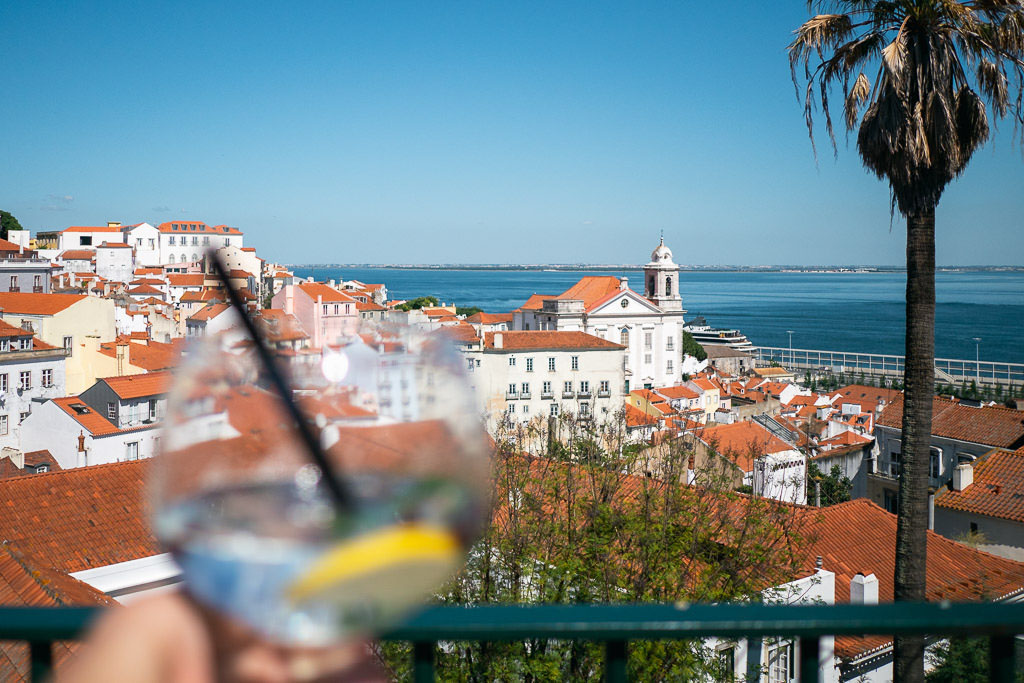
Turn a corner and you won’t know what you’ll find next: maybe some colorful traditionally tiled buildings, a quirky crafts shop, a spectacular view of the river Tejo, or maybe some incredible street art.
It’s good to know that Lisbon has a lot of steep hills. After my first time visiting Lisbon, my legs were killing me! So, be sure to bring some comfortable walking shoes.
Luckily, taxis or hailed rides are very cheap in Lisbon, as is public transport, so that can help you cover more ground. A ride from one side of the center to the other will cost about €5 – 7 (USD $5 – 7,5).
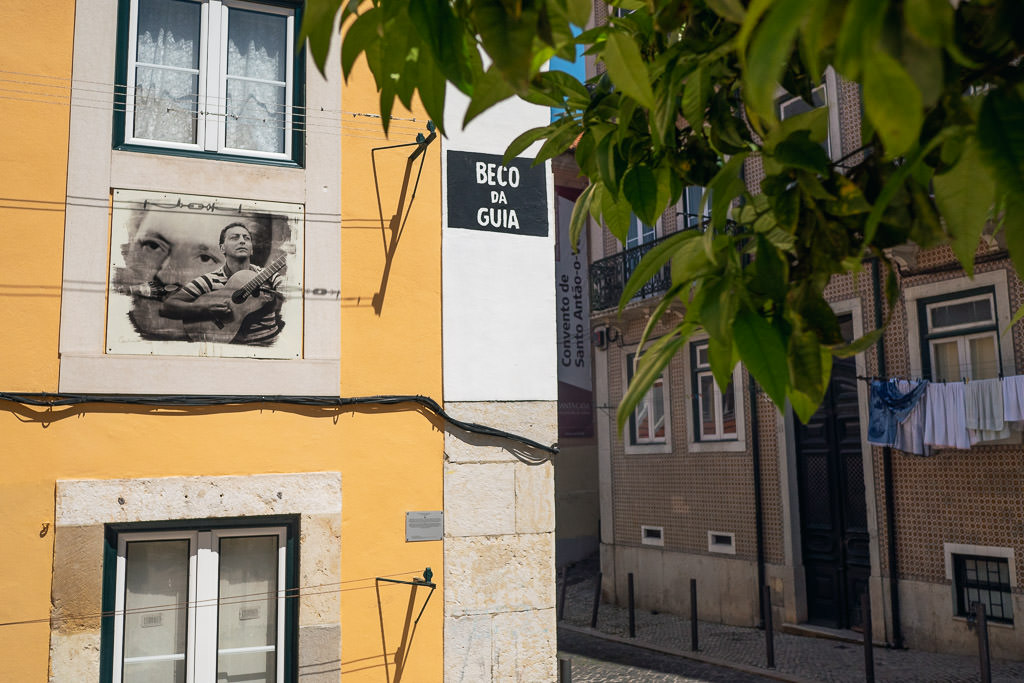
Best tours in Lisbon
Lisbon invites random exploration and much can be done independently, though it’s still worth considering guided tours when exploring Lisbon.
You’ll get historical and local insights you simply won’t get on your own and see the city from a different perspective.
Because they offer so much added value over self-guided exploration, I recommend these tours especially:
- History, Stories and Lifestyle Walking Tour — By far the top-rated walking tour in Lisbon. It’s run by Lisboa Autêntica, which specializes in cultural and creative walking tours of Lisbon.
- Quinta da Regaleira, Sintra, & Pena Palace Trip — The spectacular gardens and palaces of Sintra are easily the best day trip from Lisbon. Because there is a LOT to see in Sintra and the sights are quite spread out, a tour is the most efficient way to see it all in one day.
- Sunset Sailing Tour on the Tagus River — The sunset views of Lisbon from the river are gorgeous. It’s a great experience (I’ve actually done it thrice now) and not something you can typically do on your own. There is also a party cruise if that’s more your style.
Lisbon travel tips
Lisbon is a very safe and relaxed city, so don’t worry, you’re going to have a great time. Still, you might want to know these Lisbon tips before you visit.
First, remember you are absolutely not in Spain. Portuguese is also a very different language from Spanish. Avoid using Spanish, as this won’t earn you any brownie points. It’s one of the major cities in Portugal, so English is widely spoken and is by far the preferred language to use unless you can speak Portuguese.
If a restaurant places bread, olives, or other side items on your table, know that these aren’t free tapas. If you touch them, you have to pay for them… and they’re usually pricey! This isn’t a scam or anything; it’s just how this works in many restaurants in Portugal.
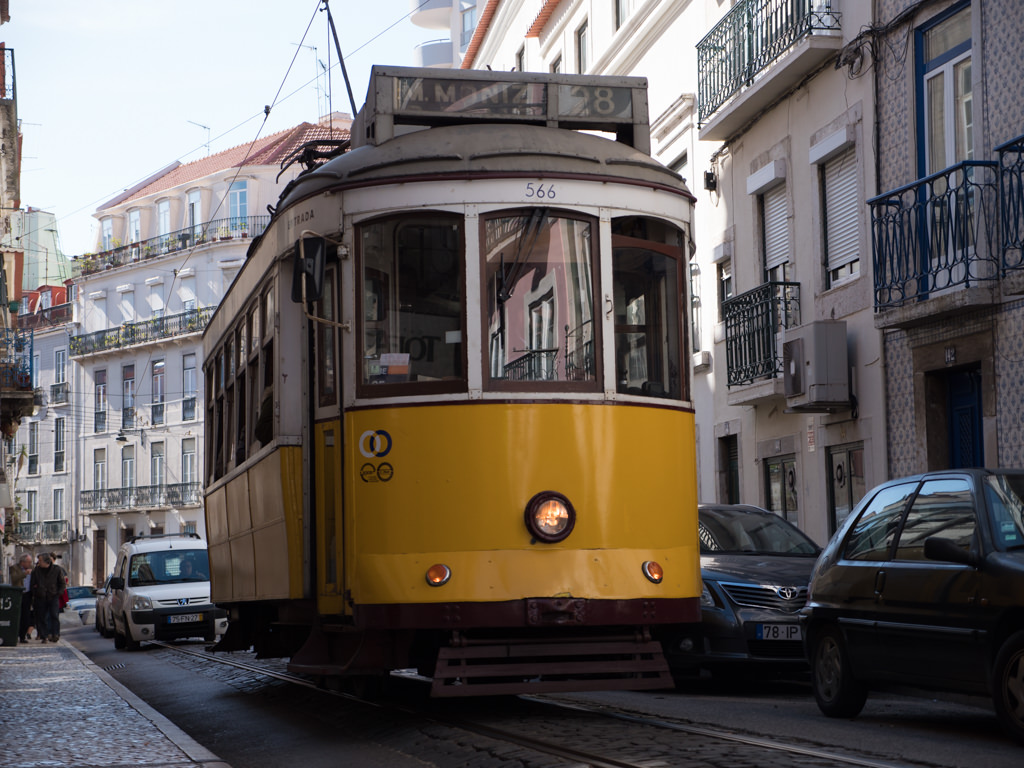
Some tourists are shocked to find drug dealers in Praça do Comércio or Rossio Square. Most of these guys are actually scammers targeting tourists. They’re annoying but harmless; simply say no thanks or ignore them, and they’ll go away. Speak to them only if you’re in desperate need of some baking powder or oregano (which is what they’re actually selling).
Either use ride-hailing apps (Uber and Bolt are the most-used) or know the true cost of taxis. Unfortunately, some taxi drivers scam clueless tourists into overpaying. When my Dutch family visited recently, they paid 30 euros ($32) for a taxi from the airport that should have cost 7 euros ($7,5). If you’re used to northern European prices, some prices in Lisbon can be surprisingly low.
Best time to visit Lisbon
Since I live in Lisbon I’ve experienced the city at every time of year. I truly believe Lisbon is a great destination year-round. Even winter has its own unique charms, letting you escape the crowds while still enjoying mild temperatures compared to northern Europe.
The only potential issue is the increased rainfall from mid-October until February. This could honestly spoil things if you’re unlucky to have many days of rain during your trip. But even if the weather conditions are variable, you can use a rainy day to dive into the many indoor museums or visit the spectacular oceanarium.
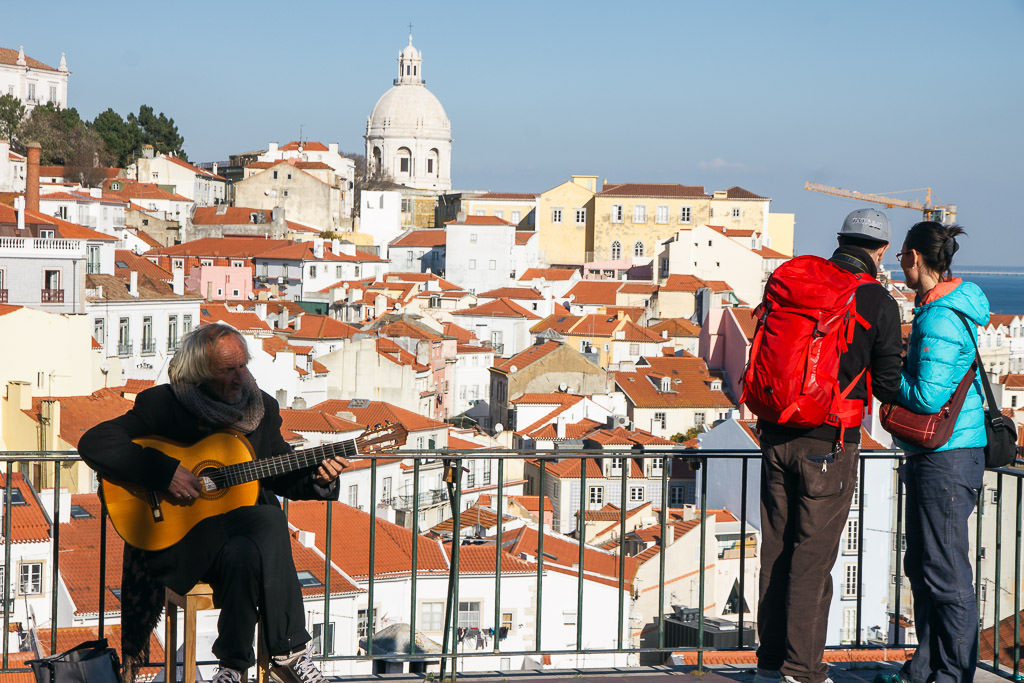
That said, I recommend spring (April and May) or late summer or early fall (September and October) as these are the ideal goldilocks months where the city isn’t too busy but the weather is usually great.
The middle of summer is great too, though prepare for crowds in the cities and at the beaches in August, with some places arguably suffering from overtourism during this time of year.
For a deeper take including month-by-month recommendations, check out my best time to visit Lisbon guide.
What to see & do in Lisbon
Finally, my Lisbon guide would not be complete without mentioning this best things to do!
A few activities I’ve actually chosen NOT to list because I’d call them tourist traps at this point.
I know it gets recommended everywhere, but you really don’t have to ride Tram 28. Queuing takes ages — it’s probably not worth your time, and the locals actually need that tram to get around.
Belem Tower is also quite ho-hum. Despite the long queues, there is not much to see inside.
However, the following sights and activities I do highly recommend.
1. Visit St. George’s Castle
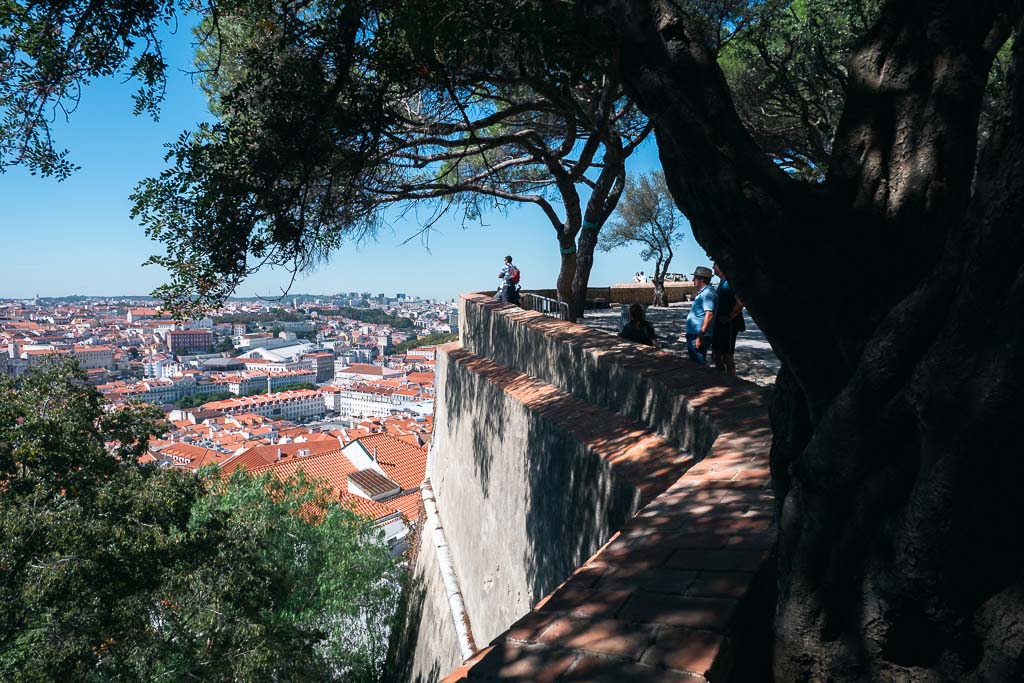
Sitting on top of one of Lisbon’s 7 hills, the Castelo de São Jorge is a great place to hit up first after landing in Lisbon. It offers spectacular views of the city — and the windy streets leading up to it, once part of the citadel, are such fun to explore.
The location has been inhabited since at least the 8th century BC. It’s from this hill that Lisbon grew in every direction.
The castle site is quite extensive and includes a museum, a bar, a restaurant, and many resident peacocks (keep your eyes on the tree canopies where they like to hang out in bunches).
Tip: The castle grounds are almost never too crowded, though the line to enter is often very long. I usually see a hundred or more people queuing. To save time, consider getting a skip-the-line ticket. Regular entry costs €15 (USD $16). Entry is free for Lisbon residents; you can use the priority line on the left if you have a resident card or can show some proof of address.
2. See the Santa Justa lift
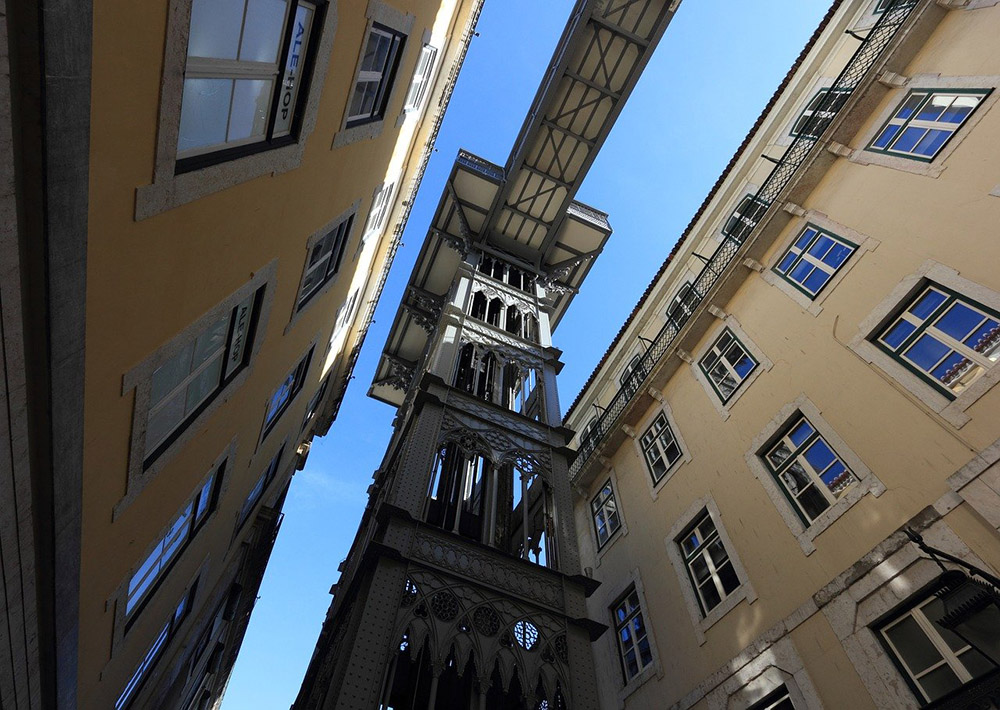
This historic cast-iron elevator built in 1902 connects the lower streets of Baixa area with the Largo do Carmo. Originally, it was steam-powered until an electric motor was installed in 1907.
It costs €5.30 to go up and down the lift (it’s free if you have the Lisbon Card). If there’s a big queue and you don’t want to wait, then you can cheat a little and still see the top of the platform without riding the lift. Simply walk to Largo do Carmo and you can access the top deck.
3. See the Praça do Comércio
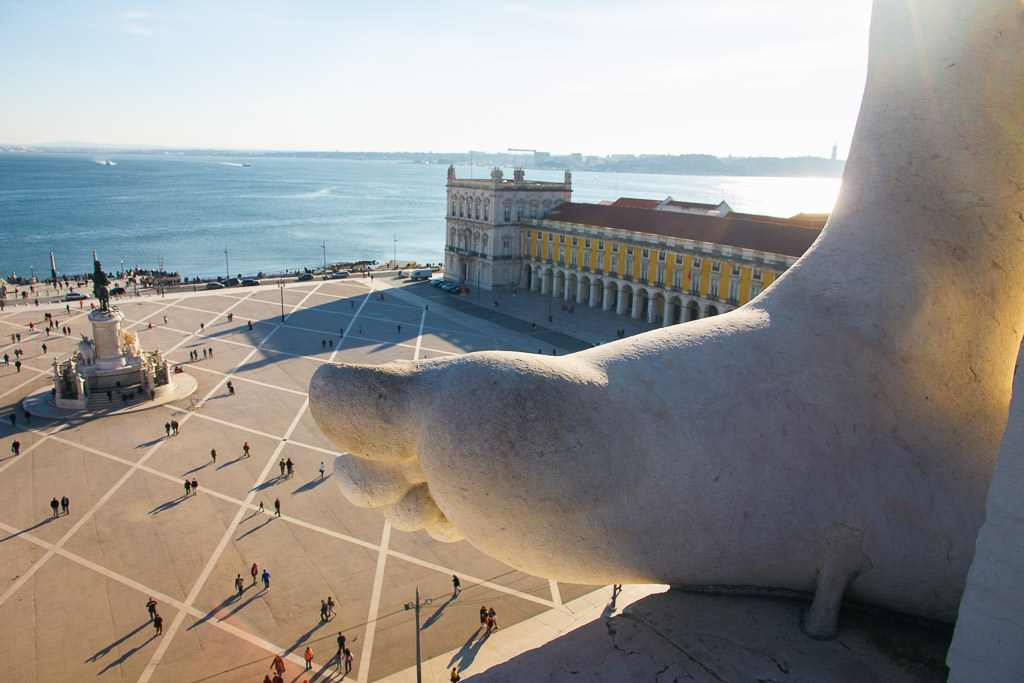
The Praça do Comércio is the central square of Lisbon. Here was once the harbor and administrative hub from where Portugal controlled commerce with all its colonies.
A little secret: you can get on top of the roof of the big arch, called Arco da Rua Augusta, where you’ll have an amazing view of the commerce square and the river Tejo. This exact map location will lead you to the rooftop entrance.
4. Take a cruise on the Tagus
Book this cruise at GetYourGuide

Get some wind in your hair while cruising the Tagus river, giving you exceptional views of the historical center and the 25th of April bridge. There are three marinas from which tours depart, usually timed to catch the sunset. You can book a 2-hour river sunset cruise on GetYourGuide.
Please excuse the over-the-top photo… I’m not an influencer I swear!
5. Stroll through the maze-like Alfama
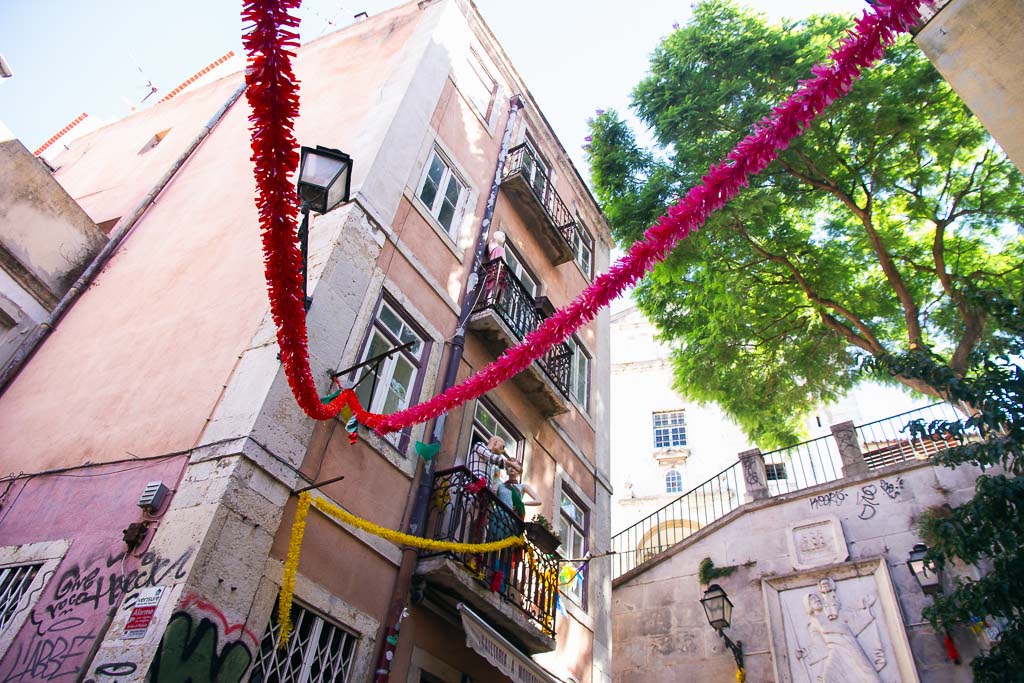
The neighborhood of Alfama is a beguiling maze of narrow cobblestone streets, sprinkled with chalk-white chapels and cozy squares shaded by orange trees. It feels like a village inside a city, and getting lost here is just a delight.
Alfama is parodoxical. In some ways, it’s the most typical part of Lisbon, with grandmothers gazing out the windows and musicians performing traditional melancholic fado music. At the same time, it’s also the most touristy area that’s been hugely taken over by Airbnbs.
Despite this, I must highly recommend exploring Alfama. It remains an island of calm, where traffic noise is replaced with the murmur of people and the smell of grilled sardines often hangs in the air. Specific sights include the Sé Cathedral and the National Tile Museum (entry €5 or free with Lisbon Card), but it’s best to simply wander around and get lost on purpose.
6. Take a day trip to Sintra
Book a full day tour to Sintra at GetYourGuide
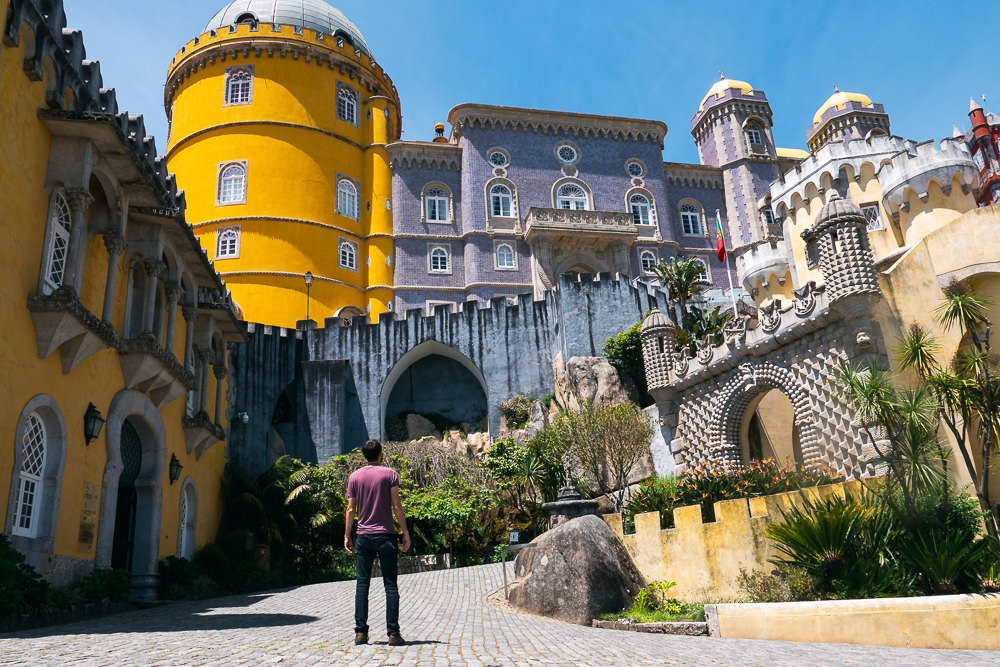
Sintra is not in Lisbon itself (it’s about 40 minutes outside of it), but many visitors to Lisbon choose to dedicate at least one full day to exploring this magical town that’s listed as a UNESCO World Heritage Site.
Surrounded by forests and mountains, Sintra is home to numerous fairytale-like palaces and beguiling gardens filled with varied plants, fountains, secret tunnels, and other unique features.
It’s possible to see Sintra independently; you can take the train from Rossio Square Station, preferably early in the morning. I have more info here on how to visit Sintra. Make sure you have some good footwear and prepare for a long day of sightseeing!
Given how packed Sintra is with sights (and how spread out they are) it can also be hugely beneficial to do this on a guided tour. This Sintra day-tour includes pick-up and drop-off in central Lisbon.
7. Try the Pasteis de Nata

The Pastel de Nata is Portugal’s famous egg tart. You absolutely have to try these yummy treats! They are sold in many bakeries and cafes, though some are known for making some of the best pasteis (try them at Manteigaria, for example). You can also check out this guide to the best pasteis de nata.
8. Listen to traditional Fado
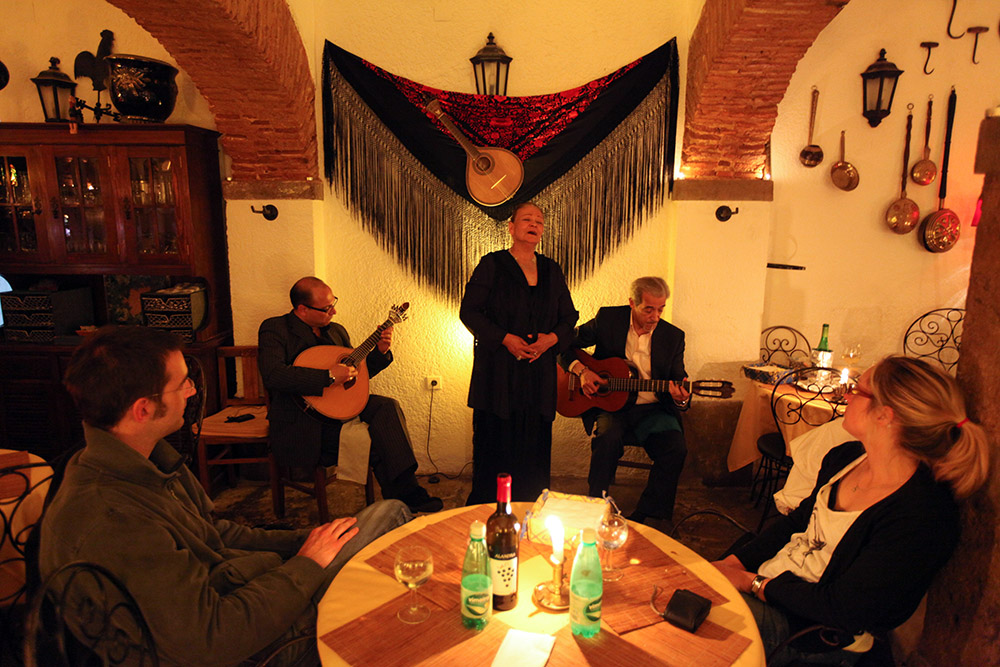
Like many other European cities, Lisbon is proud of its heritage and has kept its traditions and culture alive to this day. In addition to its storied buildings, I recommend getting in touch with Lisbon’s musical side through Fado. It is a typical Portuguese style of melancholic music that originated all the way back in the 1820s.
It’s all about saudade, a word that has no English translation, but which relates to nostalgia, longing, or the bitter-sweetness of life. Even if you don’t understand the lyrics, you can easily feel the intense emotion of the songs.
Most Fado places can be found in Alfama and Bairro Alto, where you can dine while listening to various singers perform. Avoid the overpriced Clube de Fado in Alfama and try to catch some fado at a smaller restaurant somewhere.
9. Hop between miradouros (viewpoints)
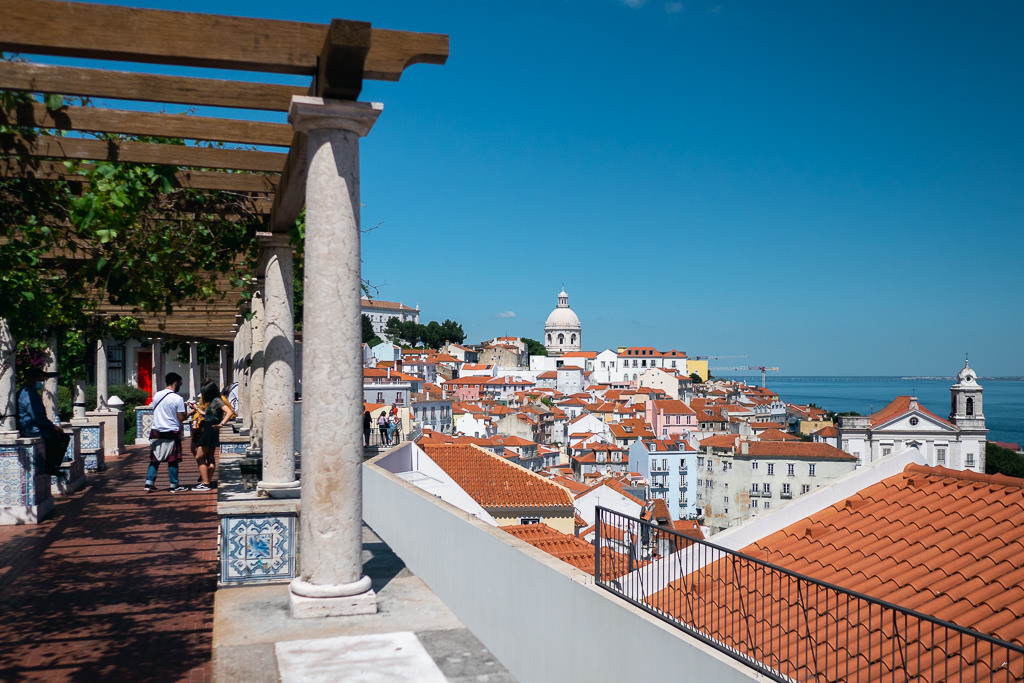
Lisbon is built on seven hills, which means no guide to Lisbon, Portugal, is complete without mentioning the viewpoints (in Portuguese, miradouros) all around the city.
My favorites in the city center are the Miradouro de São Pedro de Alcântara and the Miradouro da Graça, both of which offer great views of the castle of São Jorge. Another amazing viewpoint is the Miradouro das Portas do Sol.
Ask the locals about their favorite miradouros to find some of the most-hidden Lisbon recommendations!
10. Visit the Mosteiro dos Jerónimos
map location – Praça do Império, Belém
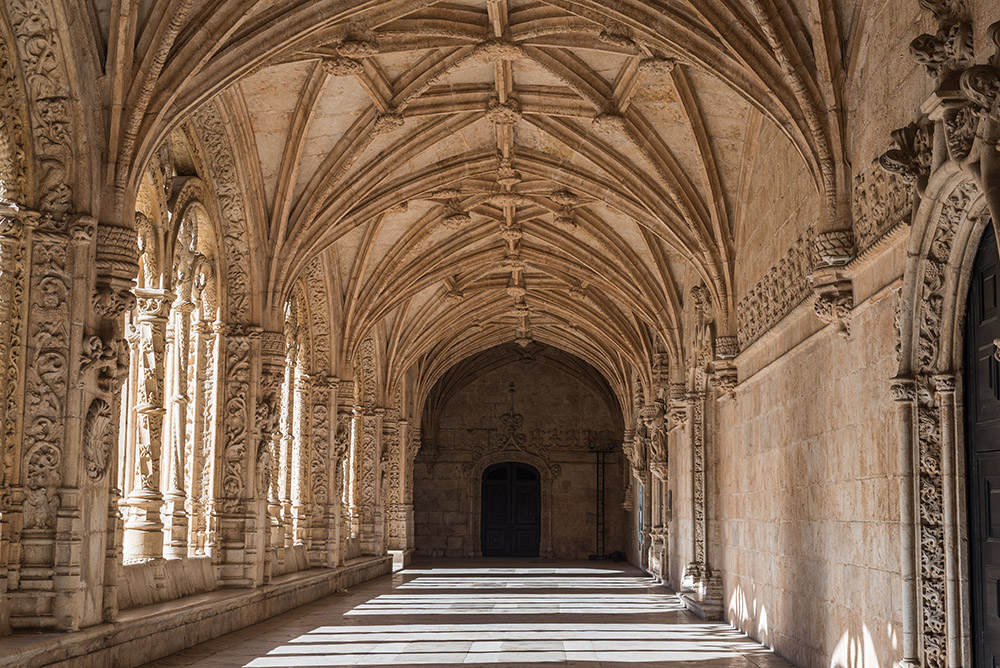
This former monastery of the Order of Saint Jerome near the Tagus river is one of the must-see places in Lisbon. The architecture is stunning with intricately detailed columns and arches. In high season the line to get tickets can be long, so you may wish to get a skip-the-queue ticket in advance or go in the early morning when it’s at its most peaceful and quiet.
A regular entry ticket costs € 10. If you have the Lisbon Card it’s free to enter.
11. Check out the Thieves’ Market
map location – Tuesdays & Saturdays
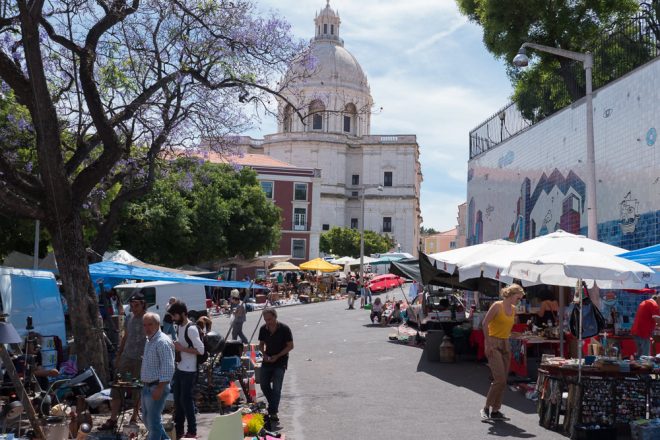
Locals joke that if you get anything stolen, this is where you’ll find it for sale the next week. But these days the Feira da Ladra, or thieves’ market, is maybe not quite so criminal anymore — it’s really just a nice flea market with antiques, crafts, and second-hand items that’s held every Tuesday and Saturday.
By the way, don’t buy old Portuguese wall tiles (azulejos) here, as they may have been stolen from a historical building somewhere. There has been a campaign against azulejo theft, so it’s getting rarer to see them, but it’s still best to avoid buying any tiles at this market in order to preserve the city.
While you’re there, grab lunch at Focaccia in Giro, which has the best damn sandwiches in Lisbon.
12. Party in Bairro Alto
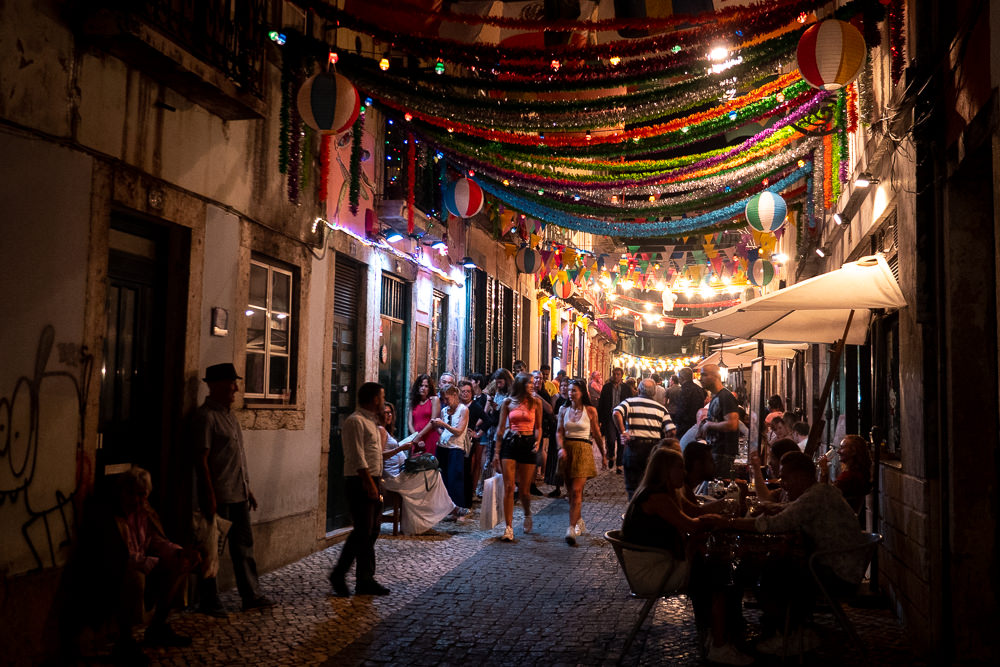
Lisbon has a buzzing nightlife scene, so you can’t travel to Lisbon and not party it up with the locals! It should be said that the nightlife in Lisbon is less about clubs and more about bars and street parties, and the district of Bairro Alto should be your first stop for a fun night out.
The cobblestone labyrinth of Bairro Alto is quiet by day but transforms into essentially one big open-air party at night (mainly on Thursday to Saturday, but with some activity on other days as well). It usually doesn’t truly kick off until midnight, when the streets suddenly fill with people. Some of the small grungy hole-in-the-wall bars have live music or a small dance floor inside, and many sell pints for as little as one Euro.
13. See the Jardim Botânico de Lisboa
map location – R. da Escola Politécnica 58
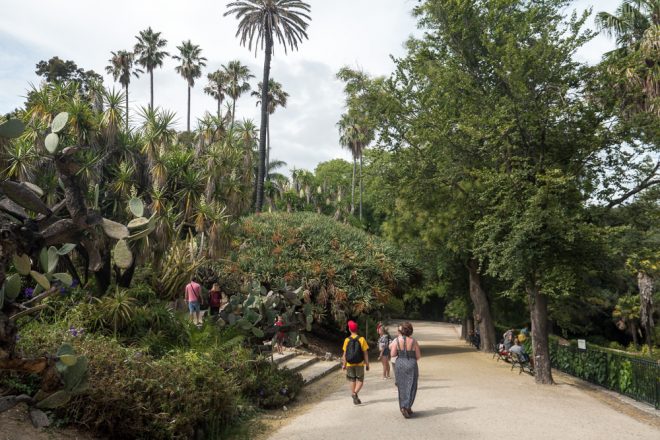
Located centrally near Principe Real Square, this botanical garden was fully renovated in 2018 and is well worth a stroll. It’s possibly the city’s most beautiful one (which is saying something, as Lisbon has quite a few!), so it’s a must-see during your Lisbon trip.
Founded in 1878, the garden is home to about 1,500 species from the four corners of the world. Look for the pine cones of the Bunya, a large Australian tree, which can weigh up to 10 kg each.
14. Shop at Embaixada
map location – Praça do Príncipe Real 26
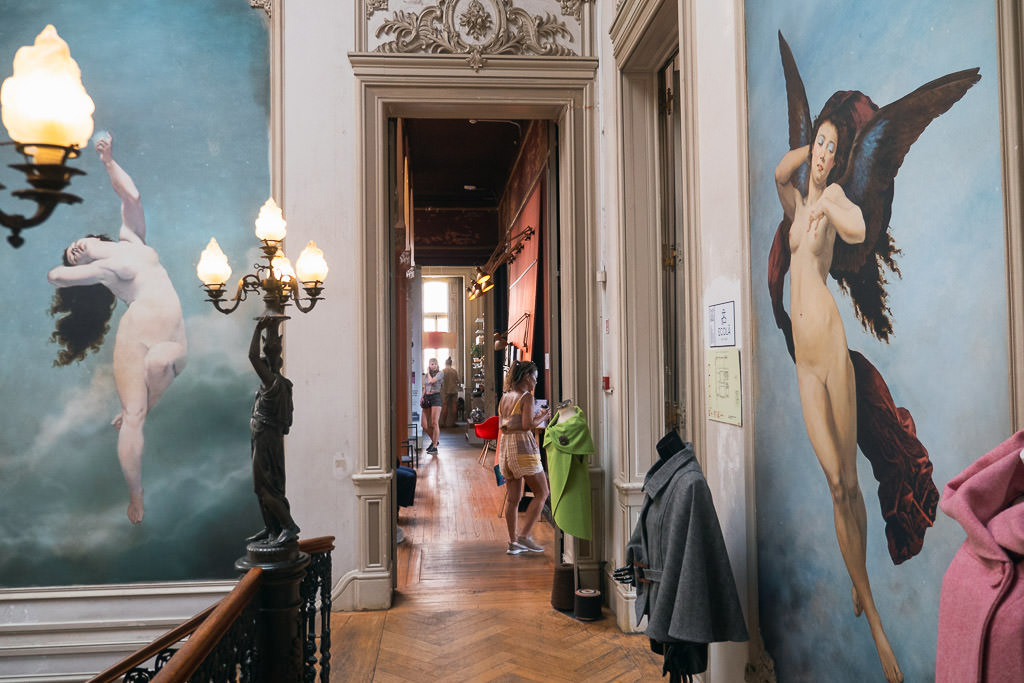
This shopping gallery is located inside the Ribeiro da Cunha Palace, hosting all sorts of boutique and concept stores, restaurants, and a trendy gin bar. It’s easy to miss if you’re just walking past, so be sure to step inside to see the beautiful building and browse all the interesting independent stores.
The restaurant at the back, Atalho Real, has a wonderful patio adjacent to the Jardim Botânico de Lisboa.
15. Sip cocktails at a rooftop bar
map location – Topo Martim Moniz, inside Centro Comercial Martim Moniz (go inside and take the elevator)
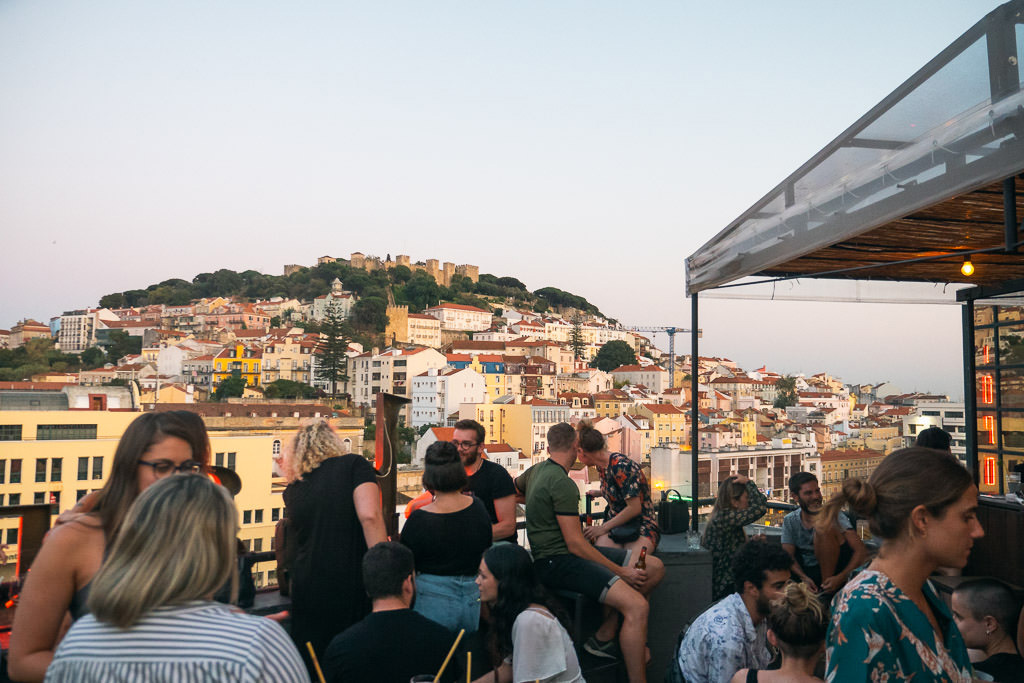
What better way to enjoy Lisbon than with a cocktail in hand and an amazing view of the Castelo de Sao Jorge? Well, you can do just that at Topo Bar, which has two locations in central Lisbon.
Topo Chiado is near the Convento do Carmo. Topo Martim Moniz is a bit more hidden; you have to go inside the Centro Comercial Martim Moniz, a mostly Chinese shopping mall, and take the lift to the top floor.
16. Drink at the quirky Pavilhão Chines
map location – Rua Dom Pedro V 89
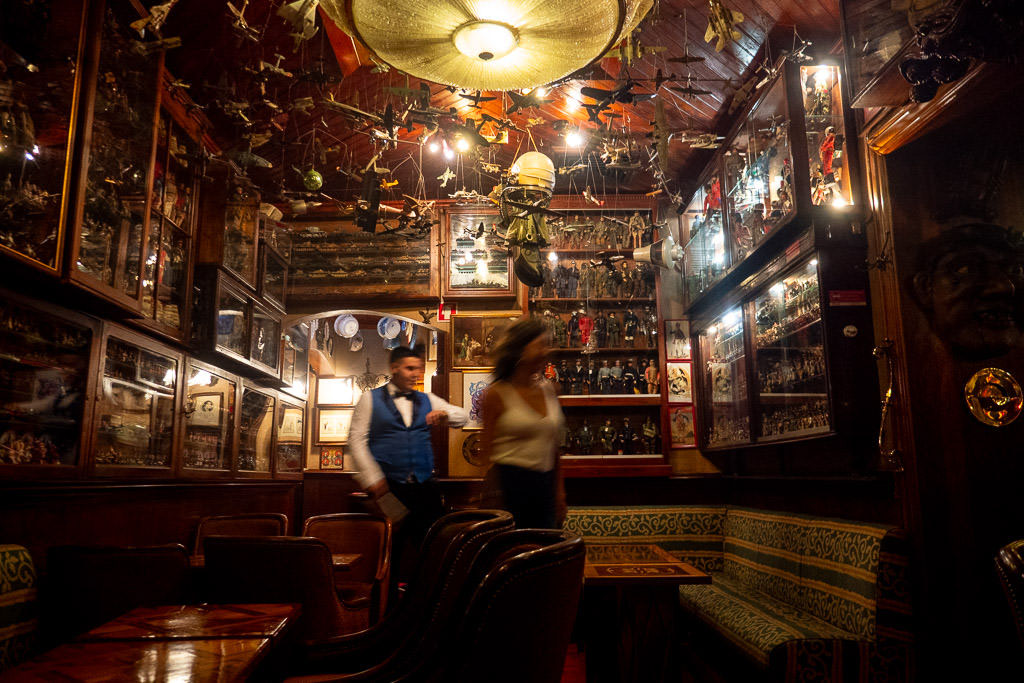
This very quirky bar is not to be missed. Its five rooms are absolutely filled top to bottom with historic toys and unusual artifacts, making you feel like you’re in a crazy Willy Wonka-esque antique museum.
They don’t like it if you just come in to take pictures (as it’s not actually a museum) so be sure to sit down and get yourself a nice cocktail while you gawk at all the crazy decoration.
17. Take a swig of Ginjinha
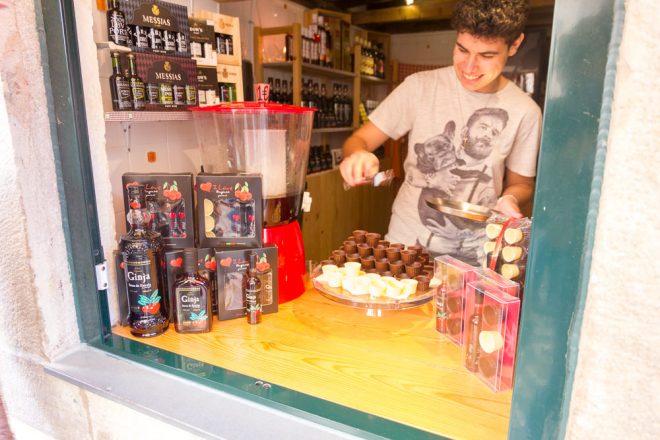
Ginja is a sweet cherry liqueur that’s local to Lisbon and a few other Portuguese places (like Óbidos). It’s a strong and sweet drink, served from a shot glass but meant to be sipped. Sometimes it’s served from a little cup made of chocolate!
The tiny Ginjinha Espinheira bar near Rossio Square is a popular spot to grab a ginjinha as a night cap. Another good place to try it is at Ginja de Óbidos, just outside of the TimeOut market.
18. Try the food at TimeOut market
map location – Av. 24 de Julho
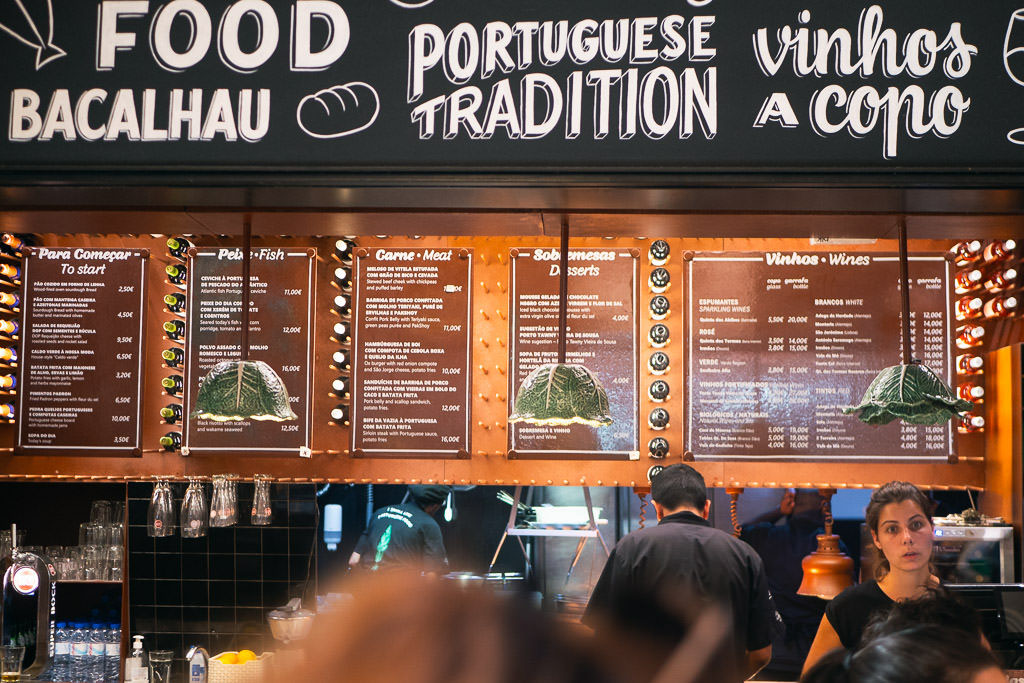
This amazing food court project (also known as Mercado da Ribeira) has brought together some of the best of Lisbon’s cuisine under one roof. It’s a busy place these days, but as a tourist, it lets you easily sample some of the Portuguese food from the many dozens of stalls.
The concept for the market was originally developed in Portugal, which TimeOut has since exported to Miami, New York, and Boston.
A fun time to go to TimeOut is on the first Friday of every month. From 22.00 to 01.30, many people will be dancing to Brazilian forró in the central area — and everyone’s invited to join the party.
Combine your TimeOut Market experience with a cultural walking tour by booking this local market and culture walking tour with city guides.
19. See the sunset at PARK Bar
map location – take the elevator inside the parking garage
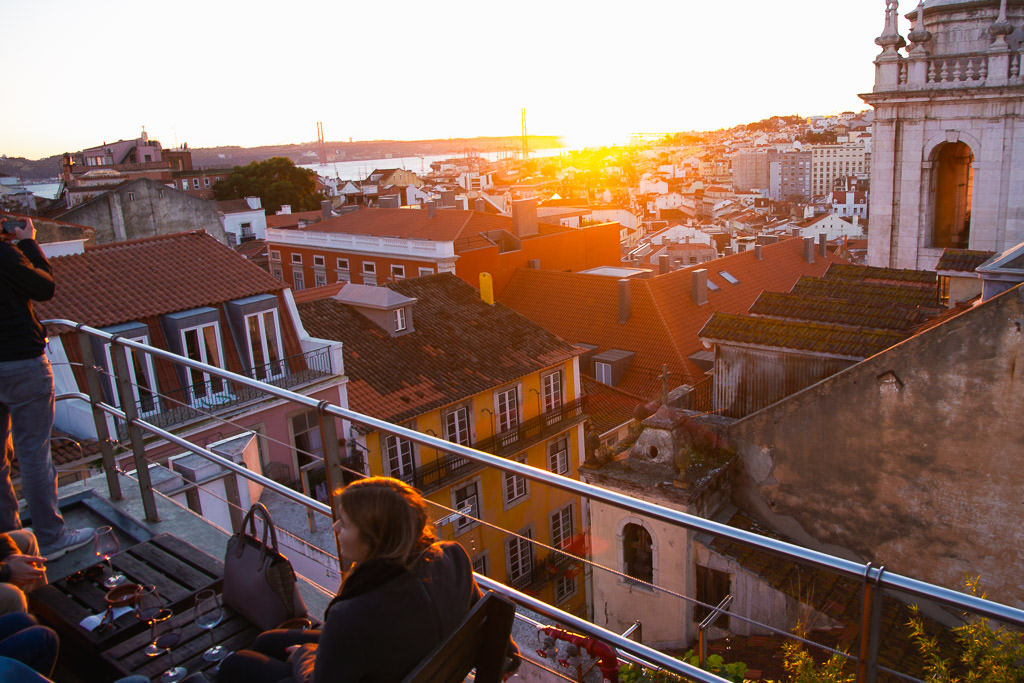
I love bringing people to this hidden spot. To get to PARK, you’ll need to go inside a parking garage, take a graffiti-covered lift to the top floor, and then you’ll find this cool bar up on the roof. The view is phenomenal and there are cocktails and DJs at night.
20. Party in Pink Street
map location – Rua Nova do Carvalho
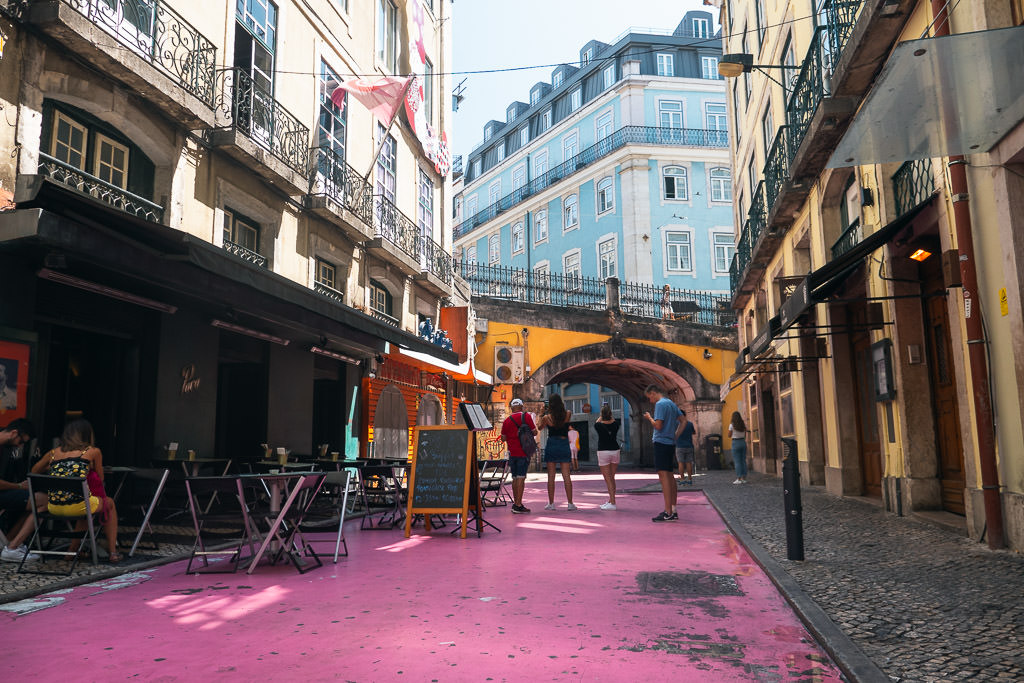
This street is pretty quiet during the day but turns alive once darkness falls. It was once the city’s red-light district, but it’s a regular nightlife area today.
Some of the bars still retain some of the original decor from when they were brothels. Pensão Amor is especially interesting as it has multiple floors and a cool burlesque-style interior. Many bars and clubs along Pink Street stay open until early morning, so when Bairro Alto closes many people move here.
21. Explore the creative hub of LXfactory
map location – R. Rodrigues de Faria 103
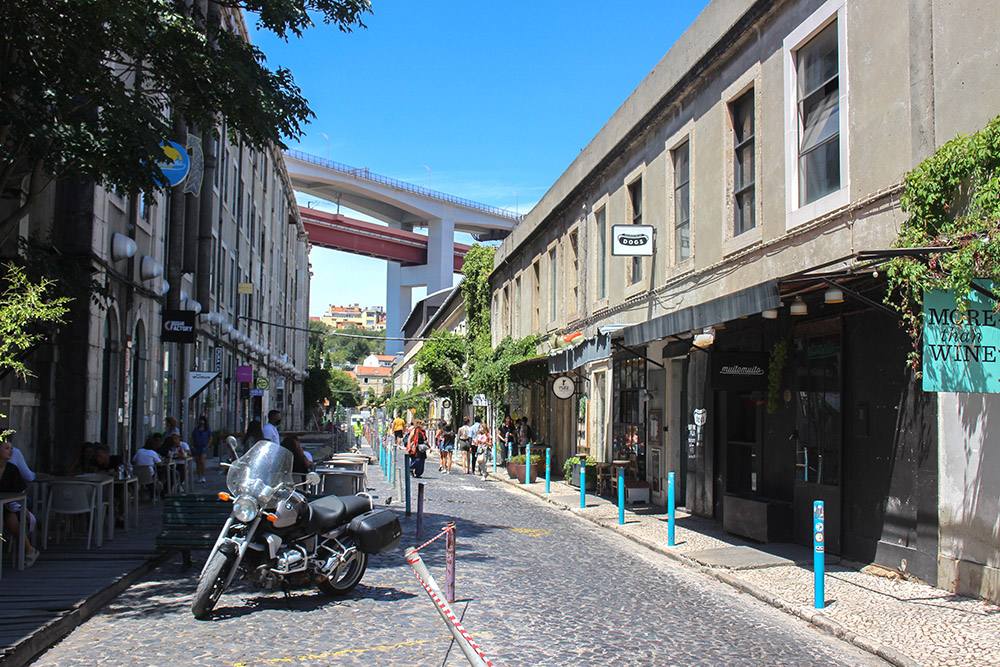
In the hip Alcantara neighborhood, old factories have been turned into a vibrant creative hub with various cafes, workshops, and small quirky businesses. The refurbished spaces and the cool location under the April 25 Bridge make this a great place to go. It may remind you a little bit of Berlin, but Portuguese-style.
Don’t miss the Ler Devegar bookstore which still has huge printing presses inside. Go up to Rio Maravilha for cocktails and rooftop views of the bridge. The main street of LXFactory also turns into a market fair every Sunday.
22. Rent bicycles and ride down the waterfront
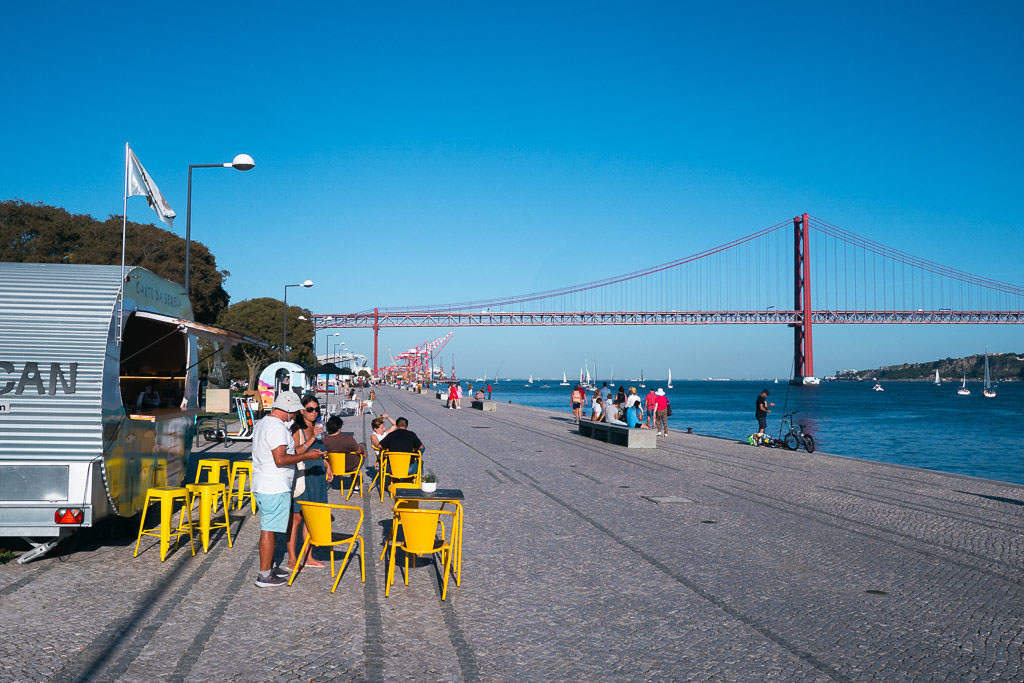
Close to the MAAT museum is the small bicycle rental service Biclas Belem. Grab a bike here and cycle along the Tejo, past the MAAT museum and further west. The river views are lovely and the area is alive with activity, especially on the weekend.
Prefer to do this as a tour? Just book it with GetYourGuide. You’ll start in central Lisbon, make your way to the river, then end in the museum quarter of Belem.
Tip: you can actually get on top of the bridge and view it from a platform! Check out Pilar 7, which has a small museum about the bridge’s construction, and a somewhat vertigo-inducing glass balcony on the edge of the bridge. Pilar 7 is free to enter if you have the Lisbon Card.
23. Go to the MAAT museum
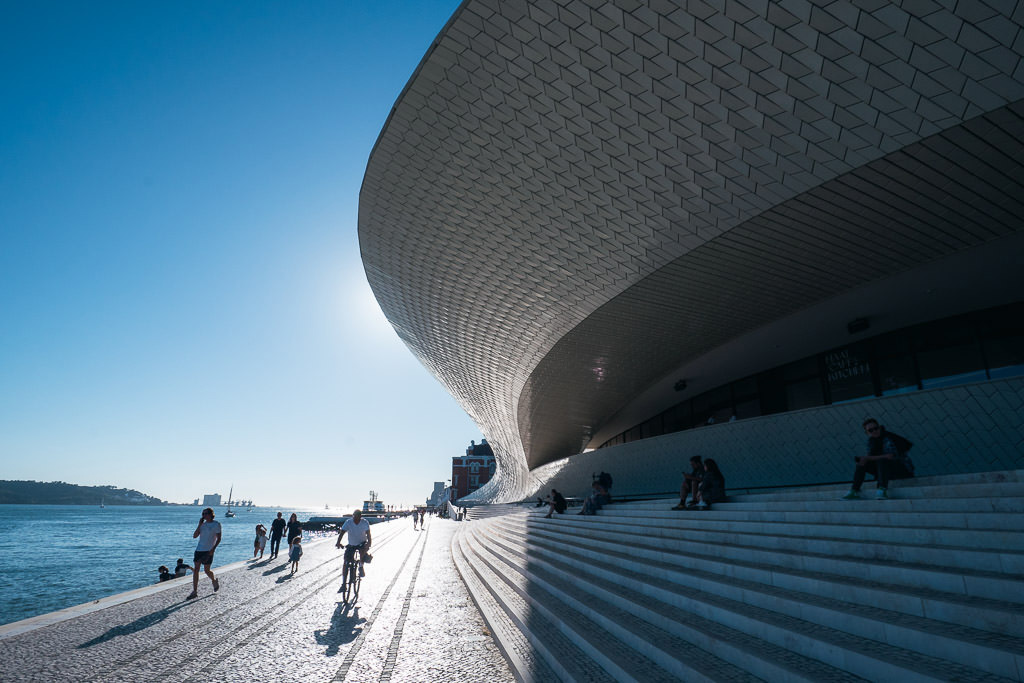
You can see the MAAT from miles away, thanks to its futuristic white building that sits like a giant manta ray above the Tejo riverbank. There are usually interesting exhibits inside, but the architecture is beautiful and worth a visit alone.
You can visit the adjacent Tejo Power Station, which has a great permanent exhibit on the history of this former coal plant as well as interesting temporary art exhibits. You can get a combined entry ticket for MAAT and Tejo. If you have a Lisbon Card, you can get a 15% discount.
24. Discover the southern riverbank
map location – Cais do Sodré station (take the ferry here)
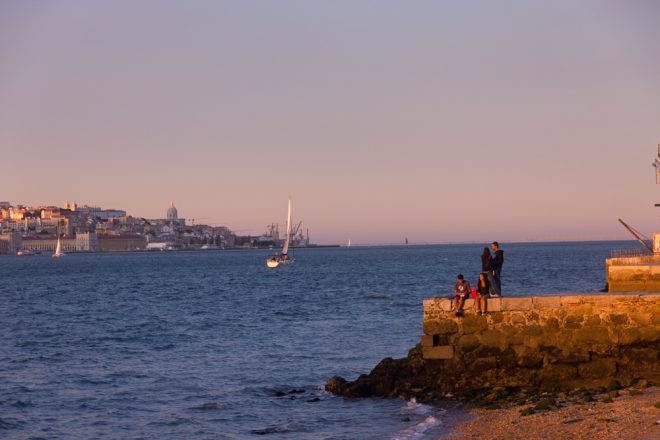
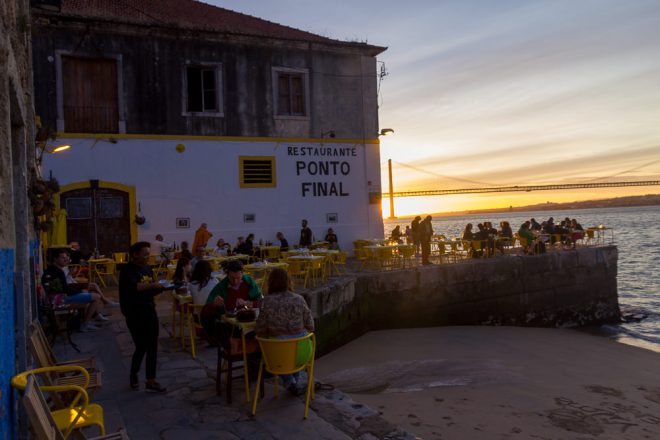
Almada [map location] is just across the river from central Lisbon, but don’t worry, it’s very easy to get to. Ferries leave behind the Cais do Sodré train station all the time and they take just five minutes (just get the boat to ‘Cacilhas’).
The town of Almada has plenty of cute restaurants and shops, as well as a marina with an old frigate and submarine. Walk along the docks past abandoned warehouses for beautiful views of Lisbon as well as two superb restaurants: Ponto Final and Atira-te Ao Rio, both right on the waterfront with amazing bay bridge views (reservation recommended if you’re going for dinner).
25. Sun & surf at Costa de Caparica
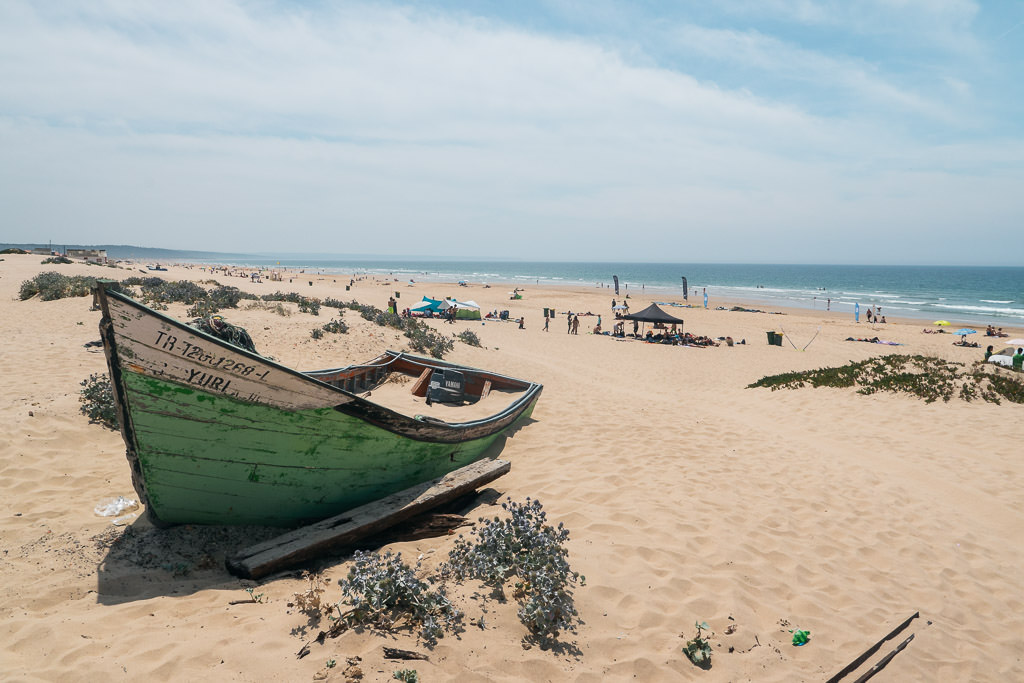
While most tourists go to Carcavelos Beach, as it has a direct train connection, I prefer the resort town of Caparica, which is just a stone’s throw from the old city of Lisbon. The town itself is not so noteworthy, but the beach is far more spacious and lined with dunes and cliffs.
Costa de Caparica is also a great surf spot. There are loads of beginner classes available if you just want to spend an afternoon in the water learning to surf.
To get to Caparica is easier than you might think. If you’re already in the center of Lisbon, you can take the ferry from Cais do Sodre station in Lisbon to Cacilhas, on the other side of the river. Then take the 3011 or 3022 bus. As of 2023, there is also a bus going straight from Cais do Sodré station to Caparica, the 3708, which takes about 70 minutes.
26. Explore Marvila, Lisbon’s brewery district
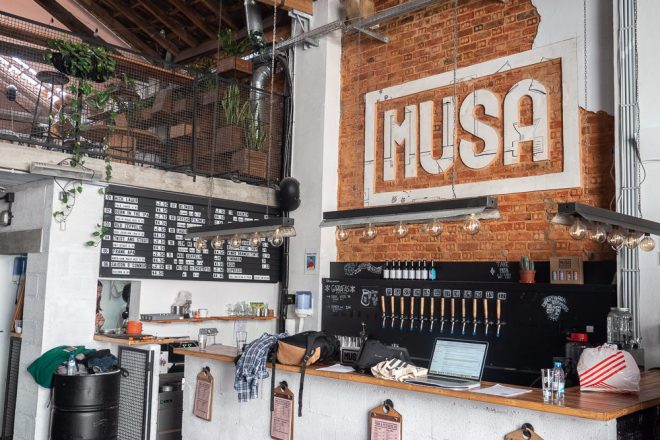
They keep saying Marvila is ‘up and coming’ and that it’s soon going to be the coolest new neighborhood in Lisbon. This does seem to be happening, albeit quite slowly. It’s a cool area to have a wander, as several craft breweries opened in some of the former warehouses, and a co-working space has set up shop.
Be sure to try the local craft beers with the 5-beer taster menu at Dois Corvos’ tap room, check out MUSA’s tap room, and keep an eye out for the beautifully decorated That Place That Does Not Exist restaurant.
27. Visit the Calouste Gulbenkian museum
map location – Av. de Berna 45A
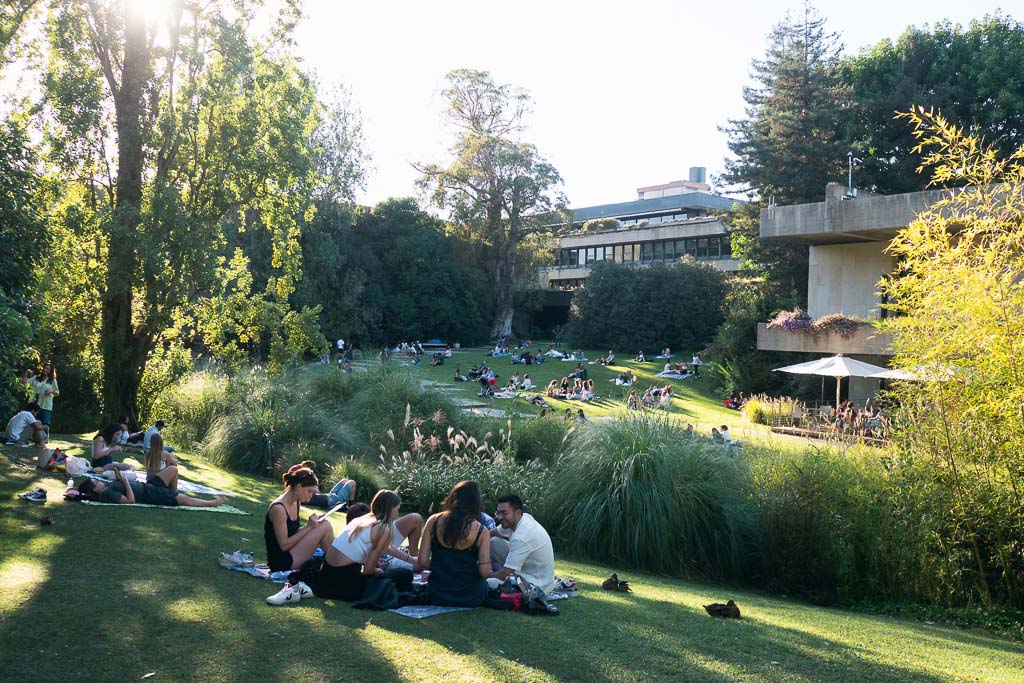
I’ll be honest, most visitors to Lisbon come for the sunshine and old Europe atmosphere and will skip the modern museums.
However, the Gulbenkian is one of Lisbon’s top museums, housing an outstanding collection ranging all the way from Rembrandt to ancient Greco-Roman art, largely originating in the private collection of oil magnate Calouste Gulbenkian.
It’s well worth a visit, either on a rainy day or even in summer when many locals go picnicking in the surrounding park.
28. Visit the stunning Oceanarium
map location – on Esplanada Dom Carlos I

Opened in 1998, the Oceanarium was the centerpiece of the world’s fair. It is to this day the biggest indoor aquarium in Europe, featuring a huge main tank with two levels of observation deck. The tank houses many schools of fish, reef sharks, and rays. It’s a stunning aquarium where you’ll no doubt have the urge to press your nose against the glass many times.
Places to visit beyond Lisbon
Lisbon is a gem of a city and I recommend spending at least 3 days to see the major sights. But there is much more to Portugal and, if you are not just on a city break to Lisbon, it’s highly worth venturing beyond the capital.
There are many excellent day trips to Lisbon, some of which I’ve already mentioned (such as Sintra), while others I’ve listed in its own guide.
It should be said that central Lisbon has become very touristy over the past few years, but going on some day trips gives you the chance to experience a less-touristy side of Portugal. Personally, I love to go to Setubal and Sesimbra about 40 minutes south of Lisbon for the beaches, hiking, and water activities.
There are many more amazing places to visit in Portugal if you have the time to explore!
Some links may be affiliate links, meaning I may earn commission from products or services I recommend. For more, see site policies.

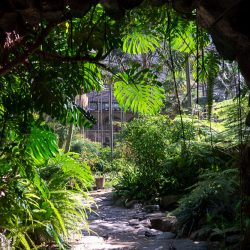




Overrated city. It used to be a beautiful and authentic city but like many other European cities, its personality is gone.
Packed with tourists all year long, old and authentic businesses closed due to the locals running away from the city because of crazy expensive prices for tourists and expect to find a tourist trap restaurant, souvenir and cafe on every corner, especially downtown and wherever you have a touristic attraction.
Lisbon is now a destination hub for bachelor parties, so expect to find a dirty and smelly city, especially in the morning.
Be careful when using Uber services, especially if you are a woman. Uber services like most of the tourist traps businesses are now being running by suspicious Indians and moroccans and many problems with quality, safety and robbery are rising.
Locals run away from it. The city is empty of locals and you will only find nomads, expats and the poor and old that cannot afford to run away.
One of the most expensive European cities right now to live, to eat, to visit. Have fun!
Hi there! I am thinking about visit Portugal in April or May. Good time to visit? After reading a couple of your blogs I am thinking about splitting my 10 days between Lisbon, Sintra and Porto. Do you make custom itineraries or know travel agents to use. I would love a mixture of site seeing and hitting many of the locations you suggested all while experiencing the culture and especially the food!
Spring is a perfect time to visit! I have more info on visiting in these months here. I can’t help with any custom itineraries, sorry. I just offer the info I have on the blog!
Hi! when was this last updated? I will be going in a week!
I live in Lisbon so it’s always updated! Enjoy your trip 🙂
We recently visited Lisbon. First time ever and had a marvellous long weekend. We found the ‘Jam Bar’ at the top of the hill in Biarro Alto. What a great evening with travellers from all around the globe!
Thanks for the great post on Lisbon. Amazing!!!
I liked the Belem Tower built in a Manueline style by the architect.
Last year when I had visited with my friends we spend over time on wandering streets and tram28.
This year we were planning to rock again in Lisbon.
Hello, thank you indeed for the valuable tips. I know how it is difficult to surmise all the information and bear it in mind all the time you travel. I traveled to Lisbon and Lagos recently and pretty much only thing I was doing is collecting information and shooting the video. I knew when I come back I am going to share with others all the knowledge I obtained during the trip. I found Portugal as a very peaceful country with people one can be proud of. In my observations I wanted to make an important emphasis on the local people. In fact they inspired me. How well-coming, kind and easy-going they are. I wish every country had such citizens indeed! If you do not mind I can leave the link here. I am not doing it for money, I do not monetarise the video. I just want to reach out to those who are about to travel to Lisbon and be informed as much as I can deliver. Sorry, I did not mean to take advantage of your wonderful article. This is the link
Thanks for sharing!
Thanks for this great summary! I’ll be visiting Lisbon in less than 2 weeks. I recently saw a documentary in German that recommended independent locally guided tours, but I just can’t remember their name, just that they were driving around town in a yellow Jeep/car. One of my friends I’m traveling with is going through cancer treatment and I don’t think she can handle a lot of walking/standing. I’d still like her to have the best experience, but I know she’d hating driving around in a tourist bus. Any recommendation would be highly appreciated! Many thanks in advance!
Hmm, not sure what tour company that might be! I also haven’t done any organized tours of that kind in Lisbon so I’m afraid I don’t have a good recommendation. There are loads of tuk-tuk drivers and other tour services (that aren’t big tour buses) though, so I don’t think you’ll have any trouble getting around.
Wonderful! Thank you!
Lisbon is packed with turists these days so expect long queues for anything that is slightly popular, overcrowded streets that cause you stress and artificial souvenir shops everywhere. Also, Lisbon became very expensive over the past years featuring currently in the 100th most expensive cities in the world. If you want to have an authentic cheaper experience you should go somewhere else in Portugal (e.g. Aveiro, Coimbra, Guimaraes, Nazare, Obidos, Evora, Troia, Tavira, Lagos, Vilamoura).
Hi Marek,
This post is incredibly helpful and interesting to read, thank you! I’m planning a trip to Portugal for New Years, starting in Porto for a few days then Alfama for a week. I’ve inly travelled to the carribean this time of year so I’m really unsure of what to expect weather-wise and how to pack accordingly. I’m from Toronto so NYE is always insanely cold (for me). If you could give me an idea as to what to expect and what really is-or isn’t – necessary to pack I’d be greatful.
Thanks!!
The winter here is nothing like Toronto 🙂 Temperatures are mild, around 15 degrees C during the day in Lisbon or the south, maybe a couple of degrees lower in Porto. Bring a rain jacket in case it rains (this is more of an issue than temperature).
Thanks for this amazing summary – it has been a great guide for me during my stay! I especially like that you also include some of the areas that are usually not on the list for sightseeing… had a great time exploring as many as possible of those!
Glad to hear that Ines! 🙂
Thanks for a great write-up. I’m convinced I would absolutely love Lisbon, but unfortunately will have to wait until next year. I totally agree with your approach of wandering the streets and seeing what you find, rather than traipsing from one ‘sight’ to another. I did this in Venice and it worked a treat.
Hi, not sure if you’re still active on this page or not… I’m planning to go to Lisbon I’m June on my own and will be staying in a hostel. I really like the sound of Lisbon Poets Hostel but I can tell it is a bit removed from the city centre in between Graca and Intendente. I’m wondering if you know anything about the hostel itself or if you think this is a good area to stay in?
Hey Amanda. I don’t know the hostel but the area is a good one to stay in. It’s just slightly outside of the center, but Anjos is also a cool area that locals like to hang out in. It’s also just a 15 min walk to the more touristy bits.
We visited a Lisbon in the Summer. After that trip, I produced a short video summarising our adventure and our experience.
https://youtu.be/_K8lm9LB8OI
We enjoyed our stay at Brickoven Palace and want to share it with you! This video includes lots attraction sites which may be useful for you guys. Feel free to share the link to the youtube video or even add it to your site.
Kind Regards,
Andrzej Andrew
I’ve lived in Lisbon for some years and I can say this is a very good post, summing up what’s really worth to see.
Completely agree with you on the major tourist traps of Lisbon: Santa Justa Lift, Belem Tower and specially tram 28. However, I still think São Jorge Castle is worth it. Not for the ruins itself, but mainly for the views and for the sense of “walking in history”.
After have lived in Lisbon for 9 years, I can safely say my favorite spot in Lisbon is Nossa Senhora do Monte viewpoint during sunset. Absolutely gorgeous view with the entire city at your feet.
Thanks for an insightful guide Marek! I’m actually scouring the web researching location-independent people living in Lisbon, because I’m very seriously thinking of moving there in the summer to set up as my main base.
What neighbourhood would you personally recommend living in, based on your experience? I know it depends on what you’re looking for, but any places in particular that stand out. I’ve found a nice apartment in Intendente that ticks a lot of boxes. Will definitely be heading out in the coming months to give it a trial run and decide for myself 😀
Hey Danny. There’s a nice scene of remote workers in Lisbon. Intendente is cool – very central, used to be the badlands of Lisbon a few years go but is now very cool, multicultural, and a great place to be based. I personally also like Lapa, Estrela & Santos.
Finding a nice place to live can be very challenging though as the market is under a lot of pressure. There’s a lot more demand than supply! If you’ve already got a place, awesome – if not you may need to get an airbnb for a month or two and hustle like crazy to find something you love.
As a fun of contemporary art I really enjoyed Berardo Museum. I was quite lucky to visit Lisbon alone at that time so I spend 4 hours there! Thank you for this in-depth guide, Marek!
These are beautiful places with beautiful names. I’m happy you let us see the beauty of Lisbon, Marek.
Awesome guide and pictures, I wish I found this before my trip to Lisbon in April of 2016. Also try to drink as much different kind of expresso as you can without bouncing off the walls of course.
This is a great list and I will definitely explore wider next time I’m in the area.
Tower of Belem? I love it.. ok, it’s sucks when it’s crowded but in winter is awesome place to visite..!!
Hah yeah I guess it’s maybe a capacity issue. In summer there’s just so many tour buses stopping there, and it’s a small space 🙂
Great write up! My girlfriend and I were in Lisbon in October and loved it, except for all the time we wasted in the line for Tram 28. It’s much more fun just to walk through all the areas to where the trolley drives. It’s a whole bunch of up and down but totally worth it 🙂